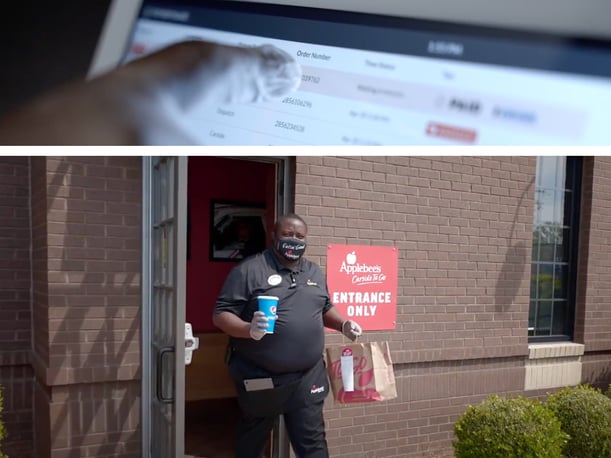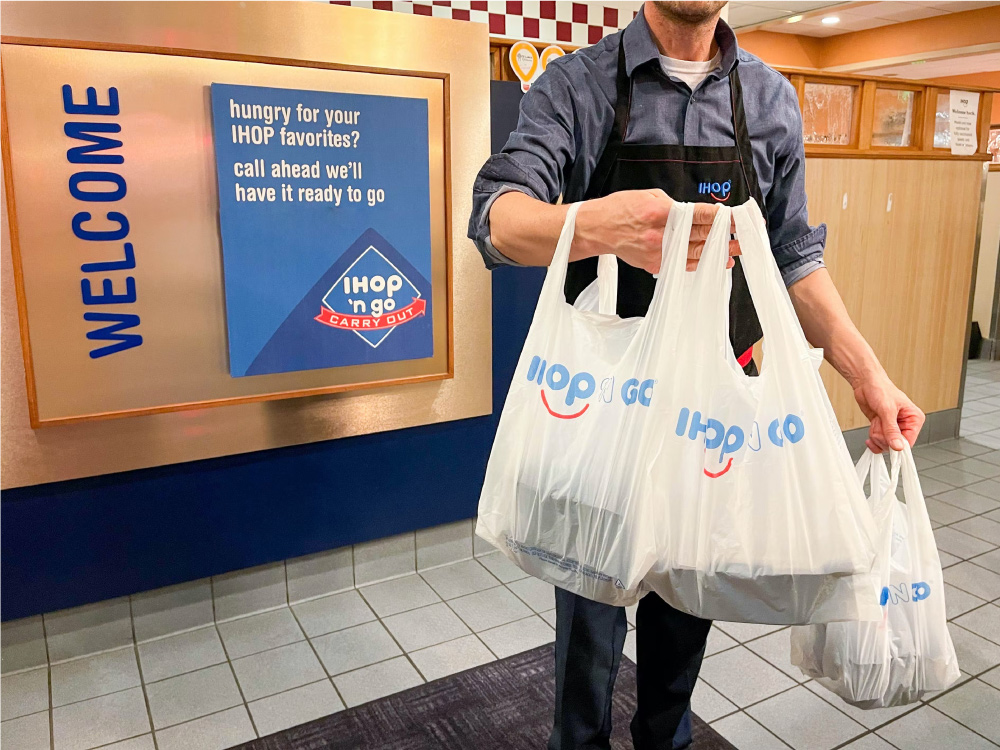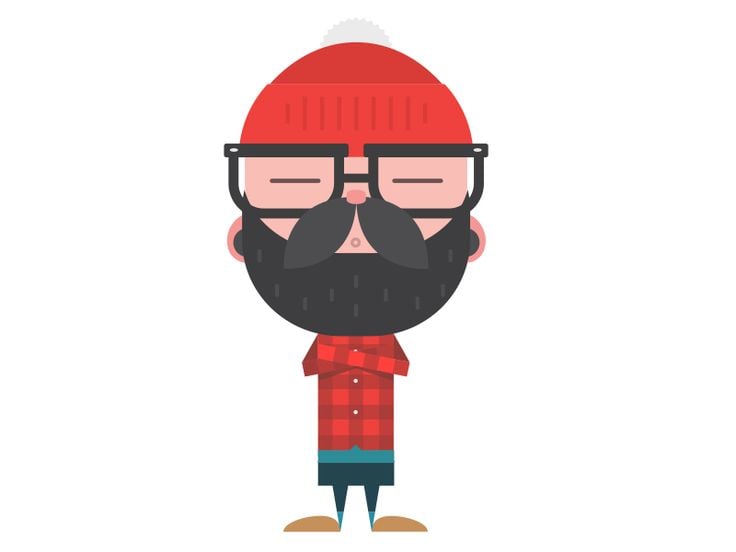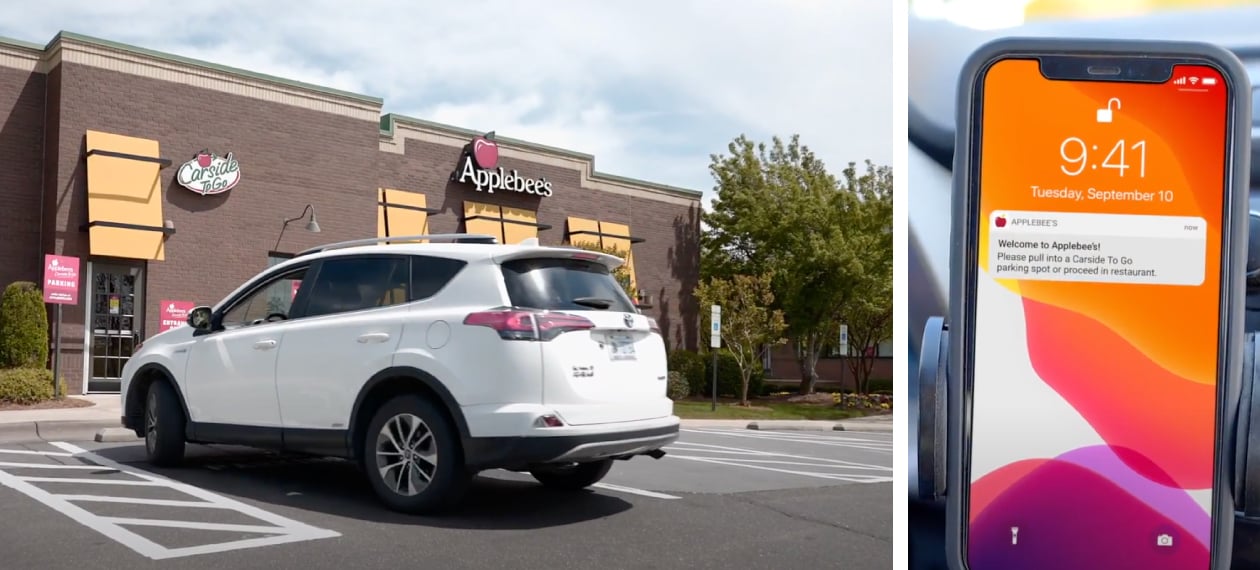Like most other restaurant chains, the last few years saw big jumps in pickup and delivery across Dine Brands’ portfolio. At Applebee’s and IHOP, off-premises now accounts for 25.6 and 21.3 percent of sales, respectively.
However, during the height of Covid, Dine leadership realized its handling of this rapidly growing part of the business was off — wait times were high, communication with customers and staff was poor, and food quality was often erratic.
In order to remain relevant, the legacy player knew it needed to truly invest in its digital experiences. In short, an overhaul was in order.
At RestaurantSpaces Fall in Santa Barbara, a collaborative presentation between Scott Gladstone, SVP of Strategy and Innovation at Dine Brands, and Marc Wallace, Co-Founder & CEO at Flybuy, outlined the ways in which Dine approached the task at hand, eventually leading to a partnership that would transform its operations.
The Evolution of Off-Premises at IHOP & Applebee’s
Gladstone described the service log jams that Applebee’s faced before working with Wallace’s team. Applebee’s launched its ‘car side to go’ service in 2004 and saw gradual growth over the next decade. In 2018, Dine began partnering with Uber Eats and DoorDash to launch a delivery program just before 2020’s Covid pandemic saw off-premises demand explode, creating a huge influx of delivery and take-out orders.
“I was personally having an experience where I would drive to Applebee’s and sit in the car for five to 10 minutes wondering what was happening,” Gladstone said.
So, in 2019, Dine management launched efforts to figure out the average length of wait times. “We embedded some technology in our app to determine how long people were really waiting in our parking lots. It was much longer than we thought.”
This realization ultimately led to IHOP and Applebee’s deploying Flybuy’s geofencing tech in 2020, aiming to revitalize the in-store, curbside, and delivery driver pickup experiences.
Shaving Wait Times for To-Go Orders
Wallace founded Radius Networks a decade ago, servicing the grocery, retail, and hospitality industries, among others. Its Flybuy platform is in over 30,000 locations across 50 countries.
The platform allows restaurant team members to be proactive, prioritizing orders based on estimated arrival times rather than filling orders on a first-in/first-out basis. Employees are often able to meet guests as they pull into the parking lot and can track customers to ensure they’re heading to the correct location.
Because the tech informs staff when customers are en route with an accurate ETA, as well as when they’re nearby, arriving, and waiting, there has been an improvement in product quality and waste reduction, an increase in staff efficiency, and a higher level of customer satisfaction.
“Our wait times have decreased significantly. They’re highly competitive with what we see with a QSR,” Gladstone says.
Furthermore, while today’s additional to-go signage and wayfinding are often makeshift, the platform makes it easier for Applebee’s staff to “geo-locate” where customers are waiting in the parking lot.
Wallace added, “We’re now working with IHOP and Applebee’s to directly integrate with Uber and DoorDash and ultimately boost customer satisfaction, improve hand-off time and reduce fees restaurants pay to the delivery drivers. When a customer has faster delivery through one of the DSPs (delivery service providers), they’re going to go back and order more through those providers.”
Dine’s virtual Brands—Cosmic Wings (Applebee’s), SuperMegaDilla, and Thrilled Cheese (both IHOP)—are using the platform too.
“It didn’t make sense to just have app orders in Flybuy,” Gladstone said, adding that Dine also has used it to integrate new channels, including self-service food lockers.
Reducing Remakes and Refunds, Eliminating Waste

Wallace shared telling statistics from IHOP’s Romulus Group of 104 restaurants, which showed a 90 percent reduction in food waste, a 50 percent reduction in remakes and order errors, as well as a 50 percent reduction in chargebacks/refunds. These efficiencies directly contributed to $175,000 in annual savings (from the 14.5% reduction in refunds for missing items) and $75,000 in savings from a 50% reduction in remakes.
Gladstone said team members have reported that overall, the tech “helps them with their job, which is important in the current tight labor market.” He added that driver wait times are shorter, positively impacting the driver’s commission. “We think that’s incredibly important.”
The results are also allowing Dine to grow the amount of designated to-go parking spaces at restaurants. “When we designed curbside 20 years ago, three parking spots was what put out there because to-go was under 10 percent of our mix. To-go is now 25 percent of our mix,” Gladstone said.
“If I can be in and out of an Applebee’s parking lot in two to three minutes, I’m more likely to come back in the future. If you’re waiting 10 minutes, you’re going to go to the restaurant down the street,” he stressed.

Posted by
Chain Restaurants Reimagined.
The Retreat to Reimagine Restaurant Development, Design + Technology.
April 12-14, 2026 | Miami, FL





-3.png)

-3.png)
-4.png)
-3.png)

Comments